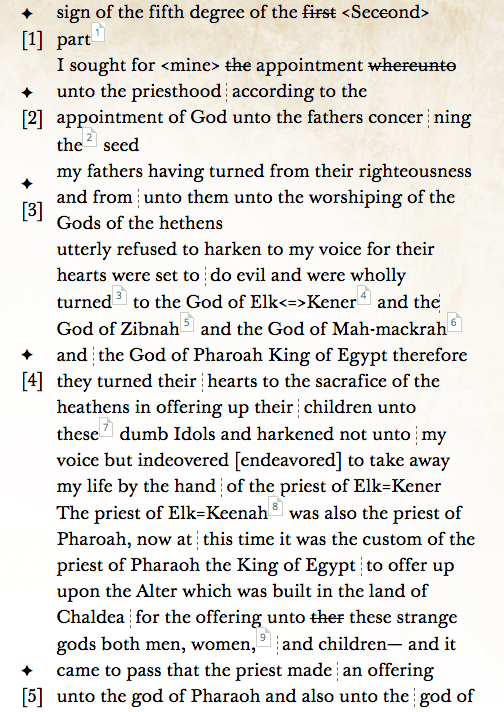Recently I have observed how the Book of Mormon uses ancient themes related to rising from the dust to convey meaning related to covenant keeping, repentance, resurrection, and enthronement, with Isaiah’s call to “rise from the dust” in Isaiah 52 playing a key role throughout the Book of Mormon (see “Dusting Off a Famous Chiasmus in the Book of Mormon, Alma 36” and “Possible Hebrew Wordplay in 2 Nephi 1:23?” (a more thorough related work in three parts will be published at MormonInterpreter.com beginning November 4). The ancient complex of themes related to dust can also be found in the Dead Sea Scrolls in, for example, Hymn 10. See Geza Vermes, “The Thanksgiving Hymns,” in The Complete Dead Sea Scrolls in English (London: Penguin Books, 2004), 337–360; https://books.google.com/books?id=r3dh4GjzuPQC&pg=PT337).
That hymn resonates with Nephi’s psalm and the chiasmus of Alma 36, speaks of the bonds of hell, the author’s grief at his sins, misery and torment, cleansing and deliverance, and divine destiny amid the heavenly council, consistent with Book of Mormon themes and the analysis of Walter Brueggeman on rising from the dust.
Further, Hymn 10 connects being “shaped from the dust” with “a creature of clay, kneaded with water,” showing that wet clay can represent God’s creative work just as dust can. This is relevant to the symbolism of John 9:6–7, where Christ anoints the eyes of a blind man with clay that He forms from spittle and the dust of the ground. After anointing, He instructs the man to wash the clay from his eyes, resulting in miraculous healing.
The early Christian leader, Irenaeus, argued that the use of clay here was an allusion to God’s creative work in forming man from the dust (Genesis 2:7; see Irenaeus, Against Heresies, Book V, 15:2), but others have disputed that, arguing that clay is not the same as dust. Recently, however, Daniel Frayer-Griggs has shown that three documents from the Dead Sea Scrolls and other Near Eastern documents provide compelling support for Irenaeus’ view that anointing with clay refers to the Creation and particularly the creation of man. See Daniel Frayer-Griggs, “Spittle, Clay, and Creation in John 9:6 and Some Dead Sea Scrolls,” Journal of Biblical Literature 132/3 (2013): 659-670.
In light of Frayer-Griggs work, a possible connection to the Book of Moses occurs in Moses 6:35, where the Lord instructs Enoch to anoint his eyes with clay and to wash them, after which Moses 6:36 tells us that Enoch could then see “the spirits that God had created; and he beheld also things which were not visible to the natural eye; and from thenceforth came the saying abroad in the land: A seer hath the Lord raised up unto his people.” By virtue of anointing the eyes with clay, Enoch becomes a seer who could see the invisible things of the Creation, including the spirits God had created. It would seem that it is not so much the clay itself that adds vision and new light to Enoch or the blind man, but the washing off of the clay/dust from the eyes.
This symbol of cleansing, repentance, and receiving light from God would seem to fit the complex of dust-related themes I have been exploring. The role of a seer, after all, is to see divine light to reveal what is not visible to the rest of us.
The seer Enoch was said to have been “raised up unto his people” by the Lord (Moses 6:36), in parallel to the words of recorded on the brass plates from Joseph of Egypt: “A seer shall the Lord God raise up, who shall be a choice seer unto the fruit of my loins” (2 Nephi 3:6) and the Lord’s promise to Joseph, “A choice seer will I raise up…” (2 Nephi 3:7). Consistent with the “rise from the dust” theme of the Book of Mormon, the choice seer is “raised up” by the Lord. Seers are raised up by the Lord as part of God’s creative and revelatory work to raise up all of us if we will let Him.The word “raise” is important in the context of dust themes in the Book of Mormon and, of course, in Isaiah 52.
2 Nephi 3:5–7 tells us that this “choice seer” would help bring Israel “out of darkness unto light … and out of captivity unto freedom” and Mosiah 8:17 reiterates that through seers, “hidden things shall come to light.” By washing off the clay/dust that brings darkness, access to light and knowledge is made possible, revealing the hidden things of the Creation and assisting in God’s ongoing creative work as He helps His children rise from the dust and enter into light and life.
This may be something to consider in exploring the role of dust/clay in the scriptures and the role of seers in the ancient and modern worlds.










You could also contrast this with Satan being cursed to never be able to rise from the dust.